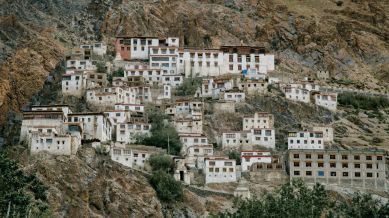Tibet might be splitting in half as the Indian continental plate crashes into the Eurasian plate, causing the Himalayas to grow.

The Indian tectonic plate’s movement causes the Himalayas to grow but the same process may also be tearing apart Tibet into two, geophysicists have discovered.
It was already understood that the Himalayas are growing because the Indian and Eurasian continental tectonic plates are colliding under the mountain range, according to LiveScience. Usually, when two tectonic plates collide, the denser one usually slides beneath the other in a phenomenon called subduction. However, since the two continental plates are similarly dense, geoscientists are not quite sure which plate is going to end up on top of another.
You have exhausted your
monthly limit of free stories.
Read more stories for free
with an Express account.
This story is subscriber only! Use promo code LOYAL10 to get 10% additional discount.
This premium article is free for now.
Register to read more free stories and access offers from partners.
This story is subscriber only! Use promo code LOYAL10 to get 10% additional discount.
This content is exclusive for our subscribers.
Subscribe now to get unlimited access to The Indian Express exclusive and premium stories.
Continental plates are thick and buoyant unlike the denser ocean plates. This means that they do not easily subduct into the mantle during collisions. Some scientists believe that the Indian plate could be resisting plunging into the mantle while continuing to slide horizontally under Tibet, according to Science magazine.
An international team of geophysicists analysed earthquake waves under Tibet and pointed towards another possibility that takes the middle ground between the two scenarios. There is a good chance that the Indian plate is “delaminating” as it slides under the Eurasian plate, with the former’s dense bottom part peeling away from the top. Further, they also found evidence for a tear at the boundary between the peeled-apart section of the slab and the intact Eurasian plate.
According to the researchers, it was not known that continents could behave in this way and it could fundamentally change earth sciences. The research was presented at the annual meeting of the American Geophysical Union and could help scientists better understand the formation of the Himalayas and in the future, might even help better understand earthquake hazards in the region.
© IE Online Media Services Pvt Ltd
First uploaded on: 18-01-2024 at 13:02 IST



